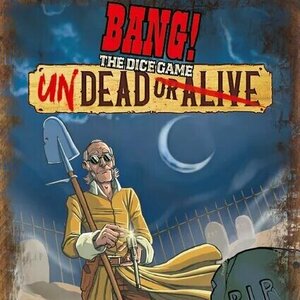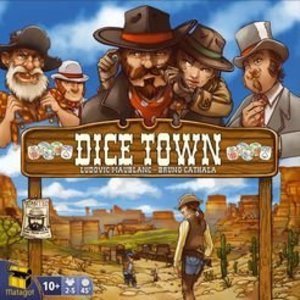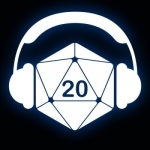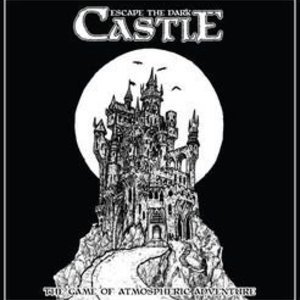Search
Search results
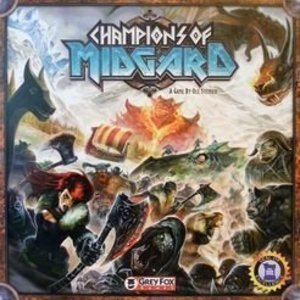
Champions of Midgard
Tabletop Game
Champions of Midgard is a middleweight, Viking-themed, worker placement game with dice rolling in...
Boardgames VikingGames
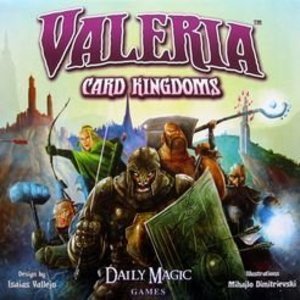
Valeria: Card Kingdoms
Tabletop Game
The land of Valeria is under siege by hordes of monsters. You and your fellow Dukes must recruit...
Purple Phoenix Games (2266 KP) rated BANG! The Dice Game: Undead or Alive in Tabletop Games
Jul 17, 2021
In the expansion review series, we take a look at a game expansion to discuss whether it is a necessary purchase/addition to one’s collection.
This breakdown is for the push-your-luck dice game BANG! The Dice Game‘s modular expansion Undead or Alive.
The Undead or Alive expansion offers several modules that can be added or left out at the players’ discretion. Module 1 is entitled “Look Me in the Eyes” and cannot be used unless Module 2 is also included. This module replaces two normal white dice for the new black Duel dice. On the Duel dice is a new icon of crossed pistols signifying a duel. The player who rolled this symbol chooses another player and they engage in a roll-off using the Duel die. Whichever player loses will need to take a random Wound Token found in this expansion. Module 2 is “Two Bullets Are Enough” and references the new Rage cards included. Every time a player suffers two or more lost hit points they must draw a Rage card to be used at the start of their next turn. Module 3 is “A New Posse in Town” and simply add in the new character cards to the base game characters. The catch is that some characters have special abilities that only trigger if the appropriate expansion module is being used, so character choices may need to be adjusted.
If you have been wondering why it is called Undead or Alive because no undead anything has yet to be mentioned, you are now in luck. Module 4 is “Undead or Alive?” and can only be used when playing with four or more players. This module has players revealing Boneyard cards when eliminated from the game. Once the number of zombie hands depicted on revealed Boneyard cards equals the number of players a zombie outbreak is initiated. At this point all eliminated characters now become zombies and are tasked with a new goal: eliminate all living characters. Zombies only use three white dice during their turns and do not gain life from beers or other effects. The survivors now switch focus to eliminating all zombies and their Zombie Master (I will let you discover this on your own).
The final module is Module 5 “Wild West Legacy.” This module is only used when playing multiple games of BANG! The Dice Game in succession. This module introduces a method of determining which player will become the next Sheriff in the next game and rules for changing characters between games.
Is it necessary to include the Undead or Alive expansion to enjoy BANG! The Dice Game? Absolutely not. It adds a lot of new content and ways to play the original game, but is not an absolute need.
Official recommendation: I categorize this as an expansion that I am super glad I have now in my collection because I know exactly the gamers with whom I want to play it. I don’t think I will use it every time I play BANG! The Dice Game, but I certainly think it is something that regular players of the base game should pick up. Being able to re-enter the game and gang up on those that were playing without you is a huge step up from typical player elimination style games. I hate being eliminated right away and waiting a long time to get back into a game. Luckily, BANG! The Dice Game is short to begin with, but coming back as a zombie is mega sweet.
This breakdown is for the push-your-luck dice game BANG! The Dice Game‘s modular expansion Undead or Alive.
The Undead or Alive expansion offers several modules that can be added or left out at the players’ discretion. Module 1 is entitled “Look Me in the Eyes” and cannot be used unless Module 2 is also included. This module replaces two normal white dice for the new black Duel dice. On the Duel dice is a new icon of crossed pistols signifying a duel. The player who rolled this symbol chooses another player and they engage in a roll-off using the Duel die. Whichever player loses will need to take a random Wound Token found in this expansion. Module 2 is “Two Bullets Are Enough” and references the new Rage cards included. Every time a player suffers two or more lost hit points they must draw a Rage card to be used at the start of their next turn. Module 3 is “A New Posse in Town” and simply add in the new character cards to the base game characters. The catch is that some characters have special abilities that only trigger if the appropriate expansion module is being used, so character choices may need to be adjusted.
If you have been wondering why it is called Undead or Alive because no undead anything has yet to be mentioned, you are now in luck. Module 4 is “Undead or Alive?” and can only be used when playing with four or more players. This module has players revealing Boneyard cards when eliminated from the game. Once the number of zombie hands depicted on revealed Boneyard cards equals the number of players a zombie outbreak is initiated. At this point all eliminated characters now become zombies and are tasked with a new goal: eliminate all living characters. Zombies only use three white dice during their turns and do not gain life from beers or other effects. The survivors now switch focus to eliminating all zombies and their Zombie Master (I will let you discover this on your own).
The final module is Module 5 “Wild West Legacy.” This module is only used when playing multiple games of BANG! The Dice Game in succession. This module introduces a method of determining which player will become the next Sheriff in the next game and rules for changing characters between games.
Is it necessary to include the Undead or Alive expansion to enjoy BANG! The Dice Game? Absolutely not. It adds a lot of new content and ways to play the original game, but is not an absolute need.
Official recommendation: I categorize this as an expansion that I am super glad I have now in my collection because I know exactly the gamers with whom I want to play it. I don’t think I will use it every time I play BANG! The Dice Game, but I certainly think it is something that regular players of the base game should pick up. Being able to re-enter the game and gang up on those that were playing without you is a huge step up from typical player elimination style games. I hate being eliminated right away and waiting a long time to get back into a game. Luckily, BANG! The Dice Game is short to begin with, but coming back as a zombie is mega sweet.
Purple Phoenix Games (2266 KP) rated Dice Town in Tabletop Games
Aug 13, 2019 (Updated Jun 24, 2021)
Hoo doggie! That’s definitely what we say in the 1800s Wild West! Yeuuuup, it’s time to take over this here town and call it ours. What are you waitin’ fer? If you ain’t helpin’ me, then you ken giiiiiiit out. This here’s mine now, just gotta… convince the people. *whistles at a horse to giddyup*
Dice Town is a rootin’-tootin’ dice chuckin’ game relying heavily on poker and card majority. Each player is trying to gain the most money, gold nuggets, and property cards to beef up their VP totals once the game ends to become the baddest dude in the West.
To setup, place the town board in the middle of the table and populate its different areas with their components: the Gold Mine receives all the gold nuggets, the Bank receives $3 initially, the General Store receives all the cards of its deck with three property cards will be displayed next to Town Hall, and Doc Badluck will receive its deck with two cards displayed. Each player will receive a dice cup, five dice, and $8 to start. The youngest player received the Sheriff badge card and the game may begin!
Turns are taken simultaneously among all players. Players will roll their dice using the dice cup and choose one result to keep. They may keep more dice by paying $1 for each die kept, or they may pay $1 to keep zero dice and try again. Players are attempting to roll the best poker hand during these turns to set themselves up for the next phase of the game – actions.
Once all players are finished keeping dice and building poker hands, they move to the actions phase. Beginning with the Gold Mine and moving left to right, each area of town will be resolved based on the players’ results. The player with the most 9s rolled will take nuggets from the Gold Mine equal to the number of 9s rolled. The player with the most 10s will take the money at the bank. Most Jacks will draw General Store cards (that can mess with other players or help the holder) equal to the number of Jacks rolled and choose one card to keep. The most Queens will summon a lady at the Saloon to help steal any General Store or property card from another player. Most Kings will be the new Sheriff in town and will break all ties (and also can be bribed). Whomever was able to build the best poker hand will be able to claim the property card at the bottom of the display and one additional property for each Ace rolled. Finally, if a player was not able to win anything up to this point, they will be able to claim a card from Doc Badluck which can be very powerful.
Play continues in this fashion until either the supply of gold nuggets has run dry or all of the property cards have been doled out. Players will score VPs for nuggets, certain General Store cards, one VP per $2 cash, $5 from being Sheriff at the game end, and VP printed on property cards owned. Once the winner is determined, that player must now challenge the losing players to a duel at high noon. Or just gloat a lot.
Components. As you can see in the photos, the component quality is excellent, as with most Matagot titles. The dice cups are sturdy plastic, the embossed poker dice are awesome, the gold nuggets are great as well! I like the quirky cartoony art style. What I do not like about Dice Town components are the cards. They are super glossy, and that’s heck for taking photos and I just don’t enjoy the feel of them as much as the nice linen-finishes. It doesn’t break the game for me or make me enjoy playing it less, I just prefer other types of finishes on cards.
I really like Dice Town. I have always had a great time when playing, and I have even acquired it twice now. I sold my first edition copy via a BGG auction (I was addicted to auctions several years back) and missed it, so I was able to grab a second edition copy last year. I haven’t regretted reacquiring it and though I rated it a 4 I don’t see this ever leaving my collection again. I love the American West theme, and I love the way the dice cups feel and sound as players are slamming them on the table. But also I hate the way the dice cups sound as players are slamming them on the table when my children are trying to sleep or without some type of buffer material between the cups and a hard table top.
The second edition printing is definitely the way to go when deciding whether to purchase Dice Town. Everything is upgraded, and the rules have been tweaked a bit for the better. I don’t really know why I like American West in my board games so much because I can’t stand Western style movies or books, but I can’t get enough of them in my games. If you and I share preferences on games and themes and components, try to grab a copy of Dice Town. You will certain like it quite a bit. We do. Purple Phoenix Games give this one a 12 / 18. While that doesn’t seem like a great score, we would rather have access to it than not. And with so many games out there, earning a place on my shelf is a big deal for a game. So enjoy!
Dice Town is a rootin’-tootin’ dice chuckin’ game relying heavily on poker and card majority. Each player is trying to gain the most money, gold nuggets, and property cards to beef up their VP totals once the game ends to become the baddest dude in the West.
To setup, place the town board in the middle of the table and populate its different areas with their components: the Gold Mine receives all the gold nuggets, the Bank receives $3 initially, the General Store receives all the cards of its deck with three property cards will be displayed next to Town Hall, and Doc Badluck will receive its deck with two cards displayed. Each player will receive a dice cup, five dice, and $8 to start. The youngest player received the Sheriff badge card and the game may begin!
Turns are taken simultaneously among all players. Players will roll their dice using the dice cup and choose one result to keep. They may keep more dice by paying $1 for each die kept, or they may pay $1 to keep zero dice and try again. Players are attempting to roll the best poker hand during these turns to set themselves up for the next phase of the game – actions.
Once all players are finished keeping dice and building poker hands, they move to the actions phase. Beginning with the Gold Mine and moving left to right, each area of town will be resolved based on the players’ results. The player with the most 9s rolled will take nuggets from the Gold Mine equal to the number of 9s rolled. The player with the most 10s will take the money at the bank. Most Jacks will draw General Store cards (that can mess with other players or help the holder) equal to the number of Jacks rolled and choose one card to keep. The most Queens will summon a lady at the Saloon to help steal any General Store or property card from another player. Most Kings will be the new Sheriff in town and will break all ties (and also can be bribed). Whomever was able to build the best poker hand will be able to claim the property card at the bottom of the display and one additional property for each Ace rolled. Finally, if a player was not able to win anything up to this point, they will be able to claim a card from Doc Badluck which can be very powerful.
Play continues in this fashion until either the supply of gold nuggets has run dry or all of the property cards have been doled out. Players will score VPs for nuggets, certain General Store cards, one VP per $2 cash, $5 from being Sheriff at the game end, and VP printed on property cards owned. Once the winner is determined, that player must now challenge the losing players to a duel at high noon. Or just gloat a lot.
Components. As you can see in the photos, the component quality is excellent, as with most Matagot titles. The dice cups are sturdy plastic, the embossed poker dice are awesome, the gold nuggets are great as well! I like the quirky cartoony art style. What I do not like about Dice Town components are the cards. They are super glossy, and that’s heck for taking photos and I just don’t enjoy the feel of them as much as the nice linen-finishes. It doesn’t break the game for me or make me enjoy playing it less, I just prefer other types of finishes on cards.
I really like Dice Town. I have always had a great time when playing, and I have even acquired it twice now. I sold my first edition copy via a BGG auction (I was addicted to auctions several years back) and missed it, so I was able to grab a second edition copy last year. I haven’t regretted reacquiring it and though I rated it a 4 I don’t see this ever leaving my collection again. I love the American West theme, and I love the way the dice cups feel and sound as players are slamming them on the table. But also I hate the way the dice cups sound as players are slamming them on the table when my children are trying to sleep or without some type of buffer material between the cups and a hard table top.
The second edition printing is definitely the way to go when deciding whether to purchase Dice Town. Everything is upgraded, and the rules have been tweaked a bit for the better. I don’t really know why I like American West in my board games so much because I can’t stand Western style movies or books, but I can’t get enough of them in my games. If you and I share preferences on games and themes and components, try to grab a copy of Dice Town. You will certain like it quite a bit. We do. Purple Phoenix Games give this one a 12 / 18. While that doesn’t seem like a great score, we would rather have access to it than not. And with so many games out there, earning a place on my shelf is a big deal for a game. So enjoy!

Lao Eng Dic+Keys (English to Lao & Lao to English)
Reference and Utilities
App
Lao Keys Plus Dictionary is a precious gift for those who loves to write in Lao & want to share in...
MUMPO (3 KP) rated Escape the Dark Castle in Tabletop Games
Mar 15, 2020
Games are very quick ~30mins (5 more)
Easy to learn in about 10 mins
Portable game
Alot of replayability
Easy to set up to get straight into the action
Quality components with thick card and nice feeling dice
A great introduction to RPG style tabletop gaming.
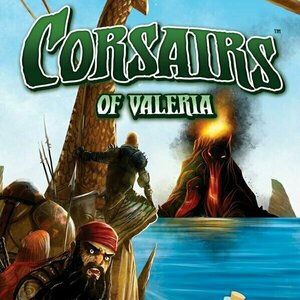
Corsairs of Valeria
Tabletop Game
With the current Commodore lost at sea, you and your fellow Corsairs have set out to complete the...
Purple Phoenix Games (2266 KP) rated Tumble Town in Tabletop Games
Mar 5, 2020
Fun fact about me: I used to live in Le Claire, Iowa (birthplace of “Buffalo Bill” Cody) on a street named Wild West Drive. While the town named many of their streets after American West figures and items, it was not your typical Iowa ghost town – if there are such things. That said, I do have an affinity for the Wild West in my gaming preferences, so when I heard about a dice/building game with an American West theme designed by Kevin Russ (who also recently designed Calico) I was immediately interested. But how does this one… stack up?
Tumble Town is dice rolling, structure building, drafting game with variable player powers. You are charged with choosing building plans to be added to Main Street of Tumble Town. You do this throughout the game by selecting the plans that will make best use of the resources (dice) you gain. The buildings that you construct may allow you special powers to be used on future turns, or one-time bonuses to be used once built. The player who can turn the greatest profit (in terms of VP) at the end of the game will be the winner!
DISCLAIMER: We were provided a prototype copy of this game for the purposes of this review. These are preview copy components, and the final components will definitely be different from these shown. Also, it is not my intention to detail every rule in the game, as there are just too many. You are invited to back the game through the Kickstarter campaign, from your FLGS, or through any other retailers stocking it after fulfillment. -T
To setup, deal each player a packet of starting components: a unique Horse card, two reference cards, Storehouse card, Main Street card, and two brown (they are red in the prototype) dice to be rolled and placed within the Storehouse. Shuffle and display the 1-, 2-, and 3-cactus building cards per the rulebook instructions to form the market. Set aside a number of each die type per the rulebook (both the building cards and dice are determined by number of players). Determine the first player and give them the first player token (a colorful rubber potted cactus). Players will connect their two Main Street cards at the central icon to create a two-card street (we chose the wagon wheel – Easy) and the game can begin!
Turns in Tumble Town consist of four mini-phases that flow into each other rather naturally. The first phase will have the players choosing a revealed building plan card from the offer market. The face-down draw stack will inform the active player as to how many and which type of dice they must draw and roll. Once they have these dice in their Storehouse, the player may now build plans using the dice they control. Buildings can be constructed and placed right onto Main Street, or be placed on the plan card to be placed on Main Street on a later turn. If the player has collected more dice than their Storehouse can hold, they must discard any of the dice they wish. This concludes a turn and the next player can begin their turn.
Certain iconography on the building plan cards allow players to use special powers throughout the game once built, and there are three types. Cards with the silvery bottom panel of symbols and the 1x notation are powers that must be used only once and only when the building is constructed. These powers could be collecting a die of the player’s choice, or receiving various dice counters. The building plan cards that feature a circular arrow notation are powers that can be used once per turn, every turn, if wished. These powers are found on each player’s Horse as well and can be adjusting a die’s face value, or re-rolling two dice, as examples. The third type of power is from the golden paneled cards that have an arrow pointing to a vertical line. These powers are only activated at the end of the game and mostly include scoring variances, like 1VP for each building a player has constructed that has a vulture icon (or a windmill, for example) featured on the card art.
Once a building is erected, the player may choose to place it onto their Main Street cards. When they place them, the player will need to choose where on Main Street these buildings should live. Like Bob Ross always says, “There are no mistakes, just happy accidents.” A player can place their buildings anywhere they wish on Main Street, but the Main Street cards will give extra bonuses to those players who plan ahead and place their buildings strategically. Some plots will ask for a building of a specific height (one die high or three dice high). Some will ask for the base level of the structure to be made of a specific material/die color (brown wood, black coal, silver metal, and gold… gold). Extra points are awarded if one-die-width alleyways are allotted, and these Main Street placements can score a bunch of endgame points.
Turns can be very quick or very deliberate, depending on the types of players involved. AP-prone players will take longer on their turns as they internalize all possibilities of their rolled results, while people like me just fly by the seats of our breeches. The game continues in this fashion: four mini-phases of drafting cards from the market, grabbing the associated dice, rolling them, and attempting to erect the best buildings on Main Street until two dice pools contain two or fewer dice. The current turn order finishes and the game is over.
Components. Again, this is a prototype copy of the game, and the publisher was decent enough to include a listing of items to be improved in the final version (like the red dice being poured brown in final – that really messed up someone’s strategy during a play-through for us because they kept forgetting that red is actually brown). The overall art style is very simplistic and I do NOT mean that negatively. The graphics and artwork are great, and give exactly what is needed without being so distracting that you cannot concentrate on your strategy. The dice are normal dice quality (that always seem to roll poorly when I’m rolling… hmm…). Once you see the photos of how the game will look during production, you will appreciate how great this is going to look on the table. No problems with components at all, save for the red vs. brown debacle that happened on our table. I really hope they keep the awwwwesome rubber cactus first player marker because it’s amazing.
I absolutely loved this one. I have always enjoyed using items for purposes other than originally intended – in this case, using dice as building materials. Of course, playing any game with dice introduces a bit of luck and instability in strategy, but Tumble Town offers quite a bit of manipulation of dice rolls that keeps almost all dice results feasible and useful. I really enjoyed the stacking, the quick turns, and the desperation when someone takes the last wood die when I was gunning for a wood-based building on my next turn. This game is light, but is chocked full of difficult decisions and luck of the roll. Tumble Town is for people who enjoy the rolling and stacking from FUSE (minus the frenzy), and the spatial building placement chaining of Villages of Valeria.
If this is the game for you, then we highly encourage you to check out the Kickstarter campaign which is running until Thursday, March 26. Tumble Town has already exceeding the funding goal at time of this review, but all future pledges will contribute to stretch goals that will improve components and add other components (spoiler?). So get out there and build up Tumble Town, ya yella-bellied greenhorns!
Tumble Town is dice rolling, structure building, drafting game with variable player powers. You are charged with choosing building plans to be added to Main Street of Tumble Town. You do this throughout the game by selecting the plans that will make best use of the resources (dice) you gain. The buildings that you construct may allow you special powers to be used on future turns, or one-time bonuses to be used once built. The player who can turn the greatest profit (in terms of VP) at the end of the game will be the winner!
DISCLAIMER: We were provided a prototype copy of this game for the purposes of this review. These are preview copy components, and the final components will definitely be different from these shown. Also, it is not my intention to detail every rule in the game, as there are just too many. You are invited to back the game through the Kickstarter campaign, from your FLGS, or through any other retailers stocking it after fulfillment. -T
To setup, deal each player a packet of starting components: a unique Horse card, two reference cards, Storehouse card, Main Street card, and two brown (they are red in the prototype) dice to be rolled and placed within the Storehouse. Shuffle and display the 1-, 2-, and 3-cactus building cards per the rulebook instructions to form the market. Set aside a number of each die type per the rulebook (both the building cards and dice are determined by number of players). Determine the first player and give them the first player token (a colorful rubber potted cactus). Players will connect their two Main Street cards at the central icon to create a two-card street (we chose the wagon wheel – Easy) and the game can begin!
Turns in Tumble Town consist of four mini-phases that flow into each other rather naturally. The first phase will have the players choosing a revealed building plan card from the offer market. The face-down draw stack will inform the active player as to how many and which type of dice they must draw and roll. Once they have these dice in their Storehouse, the player may now build plans using the dice they control. Buildings can be constructed and placed right onto Main Street, or be placed on the plan card to be placed on Main Street on a later turn. If the player has collected more dice than their Storehouse can hold, they must discard any of the dice they wish. This concludes a turn and the next player can begin their turn.
Certain iconography on the building plan cards allow players to use special powers throughout the game once built, and there are three types. Cards with the silvery bottom panel of symbols and the 1x notation are powers that must be used only once and only when the building is constructed. These powers could be collecting a die of the player’s choice, or receiving various dice counters. The building plan cards that feature a circular arrow notation are powers that can be used once per turn, every turn, if wished. These powers are found on each player’s Horse as well and can be adjusting a die’s face value, or re-rolling two dice, as examples. The third type of power is from the golden paneled cards that have an arrow pointing to a vertical line. These powers are only activated at the end of the game and mostly include scoring variances, like 1VP for each building a player has constructed that has a vulture icon (or a windmill, for example) featured on the card art.
Once a building is erected, the player may choose to place it onto their Main Street cards. When they place them, the player will need to choose where on Main Street these buildings should live. Like Bob Ross always says, “There are no mistakes, just happy accidents.” A player can place their buildings anywhere they wish on Main Street, but the Main Street cards will give extra bonuses to those players who plan ahead and place their buildings strategically. Some plots will ask for a building of a specific height (one die high or three dice high). Some will ask for the base level of the structure to be made of a specific material/die color (brown wood, black coal, silver metal, and gold… gold). Extra points are awarded if one-die-width alleyways are allotted, and these Main Street placements can score a bunch of endgame points.
Turns can be very quick or very deliberate, depending on the types of players involved. AP-prone players will take longer on their turns as they internalize all possibilities of their rolled results, while people like me just fly by the seats of our breeches. The game continues in this fashion: four mini-phases of drafting cards from the market, grabbing the associated dice, rolling them, and attempting to erect the best buildings on Main Street until two dice pools contain two or fewer dice. The current turn order finishes and the game is over.
Components. Again, this is a prototype copy of the game, and the publisher was decent enough to include a listing of items to be improved in the final version (like the red dice being poured brown in final – that really messed up someone’s strategy during a play-through for us because they kept forgetting that red is actually brown). The overall art style is very simplistic and I do NOT mean that negatively. The graphics and artwork are great, and give exactly what is needed without being so distracting that you cannot concentrate on your strategy. The dice are normal dice quality (that always seem to roll poorly when I’m rolling… hmm…). Once you see the photos of how the game will look during production, you will appreciate how great this is going to look on the table. No problems with components at all, save for the red vs. brown debacle that happened on our table. I really hope they keep the awwwwesome rubber cactus first player marker because it’s amazing.
I absolutely loved this one. I have always enjoyed using items for purposes other than originally intended – in this case, using dice as building materials. Of course, playing any game with dice introduces a bit of luck and instability in strategy, but Tumble Town offers quite a bit of manipulation of dice rolls that keeps almost all dice results feasible and useful. I really enjoyed the stacking, the quick turns, and the desperation when someone takes the last wood die when I was gunning for a wood-based building on my next turn. This game is light, but is chocked full of difficult decisions and luck of the roll. Tumble Town is for people who enjoy the rolling and stacking from FUSE (minus the frenzy), and the spatial building placement chaining of Villages of Valeria.
If this is the game for you, then we highly encourage you to check out the Kickstarter campaign which is running until Thursday, March 26. Tumble Town has already exceeding the funding goal at time of this review, but all future pledges will contribute to stretch goals that will improve components and add other components (spoiler?). So get out there and build up Tumble Town, ya yella-bellied greenhorns!
